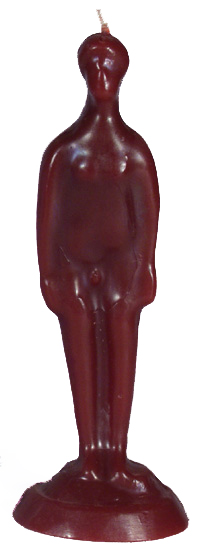name=signsA10>
There are two forms of ceromancy or wax reading. The first involves dedicating acandlein a ritual manner, then pouring some of the melted wax from it into cold water. The resultant hardened blobs of wax can be read just like reading tea leaves, with similar or identical meanings given to the images formed in the wax — a tree, a cat, a book, a car — that you will find in any book on tea leaf reading.
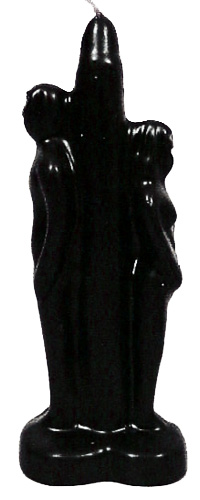
Either the client (the person for whom the candle is being burned) is clinging to past conditions or someone or something from the clients past is unwilling to let the client go.
The candle wick forms a knot or forms twin flames
HOW TO READ DIVINATION SIGNS FROM CANDLE-BURNING:
The candle flame hisses, sizzles, pops, or makes other noises
The candle burns unusually slowly or wont go out
A free-standing candle lets out a lot of smoke but burns clean at the end
Remember that a knot or twin flame formation may give different reading outcomes on a free-standing candle than on a glass-encased candle, due to the way we perform smoke-reading or caponomancy of the candle-glass in the latter type of candle. What looks interesting and ends well on a free-standing candle may look interesting but end badly in the glass of a vigil light.
Of course, it is important to note that somecandlesare simply poorly made and will burn badly no matter what you do with them (for instance, if the wick is too thick they may burn sootily). Also, the temperature in the area, the presence of wind or a draft, and other external factors may play a part in howcandlesburn. The novice should not worry over-much about howcandlesburn until he or she has burned a lot ofcandlesand gained some perspective on the matter.
If a candle shows repeated flaring up and dying away or guttering of the flame, alternating between high and low flame, or even briefly winking out and then relighting itself, it is often seen as a sign that the person on whom you are working is subconsciously aware of your actions and may be responding partially, then fighting off your influence, then responding again.
A pin or needle on a marked free-standing candle drops — but it clings and wont fall
This is a very troubling and frustrating situation. How you deal with it will depend on the reason you were burning the candle in the first place.
A free-standing candle burns down to a puddle of wax, forming images
It is passive to let dark streaks or smoke marks form on a glass-encased vigil light if you can avoid it. Why settle for a bad divination sign and set a second light if you can work on the candle and correct it as it burns?
If you see an overly slow burn on a candle set for positive-outcome petition, it means that it will take time before you see results, but if and when they do come, they will last.
If your light was lit for simple increase or decrease without respect to the will of another being (more wealth, less illness, etc.) then this is may be considered a bad sign — a negative reply from the world of spirit to the question implied in the work.
When a materialist decides to try candle magic, there is often a half-hearted attempt at producing a non-materialistic or transcendental outcome — Ill light a candle to improve my situation — but as soon as a sign is given, the entire enterprise is immediately downgraded to materialistic physics — The candle was probably badly made, right?
If one candle out of a set burns out hours or days before the others, the choice of what to do is yours, essentially. Some folks would take it as a sign that the work is fast but not long, while others might take it as a sign but would not like what it signified and for that reason they would light another candle to replace it.
If you are passively burning acandle, then if knots form in the wick you will just let the knots stay, watch the twin flames, watch the wax run, watch the glass break and spill wax all over, and so forth. In my shop we call these passively burnedcandlestestcandles– that is,candlesburned for the sole purpose of divination by the flamme (pyromancy), the remnant wax (ceromancy) and/or the smoke patterns left in the glass (capnomancy).
Either one studies divination or one does not. Where non-magicians have the notion that environment dictates the burn, i instead see that the environment is part of the divination. Think about that. A candle burned in a cold garage might not come out as clean as acandleburned in a warm home — but what kind of a person burns a lovecandlein their garage? The environment that thecandlesetter selects, the random draw of whichcandlewas pulled from a case of factory-madecandles, and the way that he or she tends to the candle are part of the whole isness of the burn from which the divination is made.
A free-standing candle lets out a lot of smoke but burns clean at the end
On a free-standing candle, the twin flames — especially if they eventually rejoin — indicate that after delays a union or reunion may be foretold, or that there may be a flirtation, separation, or parting before the union or reunion of two parties.
When a vigil candle burns with a knot, the smoke will almost always end up marking the glass and the darks may be quite dark and sooty.
If a candle falls over or if it flames up so high it puts your curtains on fire or destroys a portion of your altar, you know you are in trouble. An out of control fire is both dangerous and a very bad sign in terms of spirtual workings. Once you get the flames under control and take stock of the damage, it is wise to accept that the event is a sign that not only will the spell probably fail but there may be increased danger ahead for you or the client. In order to accomplish anything, you will have to start the entire job over from the beginning — but first do a thoroughUncrossingspell for everyone involved andritually clean the premisesbefore setting any more lights.
Perhaps the best way to get a divination oncandle-burning spellsis through ceromancy — divination by wax. In this case, the wax we read is the wax of thecandlesthemselves. Many people consider ceromancy to be a superior method of divination on candles because the magical spell work of candle setting provides its own form of fortune telling. In other words, your reading of the candle wax tells you how your own candle spell is going!
CEROMANCY IN HOODOO CANDLE MAGICThis article is part of a series of instructional chapters on
A sign that appears during the burning of acandledoes not reflect on your ability to do the work: If yourcandleburns badly or goes out, you did not botch the spell. However, on the other hand, the fact that a natural draft put yourcandleout or the cat tipped it over does not obviate the fact that thecandlegoing out was a bad sign. This is because a sign is a message, and the method of its delivery to your consciousness is not as important as that you saw it and received the sign.
Based on my lifetime of experience practicing and teaching these arts, my best advice to those who pose questions about what causes a candle to burn with a particular sign is, If you cannot feel the spirit, dont waste your time in church. That is, if magic is not comfortable to you or is not your realm of productive outcomes, try studying physics instead. But if you want to learn the art of hoodoo candle magic, remember this: it is an ART, not a science.
![]()
You can now manipulate your spell work to take advantage of this newfound knowledge.
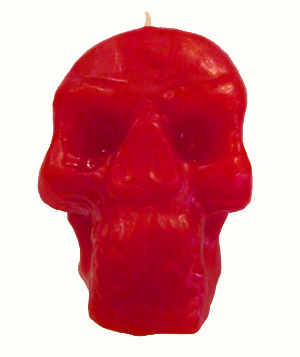
The candle tips over and flames up into a fire hazard
A dirty, black, sooty burn marks the candle glass or holder
name=signsA9>
A noisy candle is usually interpreted — especially by those in the Spiritual Church Movement — as a sign that spirits (of the dead, of angels, or of other entities) are trying to come through, that is, to communicate. Pay attention! You may learn something important.
On a free-standing candle, a knot or knob or lump indicates a stubborn situation, but one with a lot of intensity. The clumped-up knot signifies resistance.
If you want to WORK the situation throughcandle magicand you do not like the way that thecandleis going, you do not have to sit back and watch it go nuts with knots, runny wax, or out-of-control flames. Get the message thecandlegives — and then rectify the unfortunatecandlssigns as you work. This is YOUR WORK, and you owe it to yourself and/or your client to make the outcome of thecandle spellas good as possible.
A pin or needle on a marked free-standing candle drops — but it clings and wont fall
Generally a very slow burn signifies that the work is very slow in coming to fruition, but what that means in any given case will, of course, vary based on the purpose for which the candle was set.
When a glass-encased candle burns with a knot, knob, or lump at the tip of the wick or with twin flames or two diverging wicks, the reading of the flame is greatly complicated by the fact that these formations will almost always (not always, but ALMOST always) result in a smoked-up glass, so that the capnomancy or smoke-reading portion of the divination can be expected to be dark, streaky, or sooty, which is not a good thing.
rite (or, in a pinch, simply addto the clients candle) to break that thing off.
As a capnomancy reader, i already know the upcoming divination score when i see a glass-encased vigil light with a knotted or divided flame, and once i see that, and if it persists and is smoky, i often feel the need to fix it, because what i want is results. I will trim, groom, and work the candle to get the results i want. Many people dont — God bless them. But then they have to light more candles, until they get one to burn right. For me, its like raising animals — if one falls sick, i dont just buy a second one to replace it. I nurse it back to health.
SIGNS LEFT IN THE WAX RESIDUE FROM A CANDLE
The physics and the chemistry ofcandleburning are fascinating topics. Physics covers things such as ambient temperature, air flow, barometric pressure, humidity level, ratio of wick diameter to wax diameter, effects of additional combustible materials such asherbs and roots, placement of the wick in the column of wax, and so forth. Chemistry covers wax composition (which can vary greatly fromcandletocandle), effects of dyes upon combustibility, the incorporation of essential oils andhoodoo formula oils(with their own varied chemical compositions), and the like.
A free-standing candle runs and melts a lot while burning
name=signsA2>
Should you light another candle in its place? Well, there are no rules governing this sort of situation, and the best i can recommend is that you let spirit guide you.
name=signsA1>
If the client is the one who is clinging, you will probably know it by knowing the clients case.
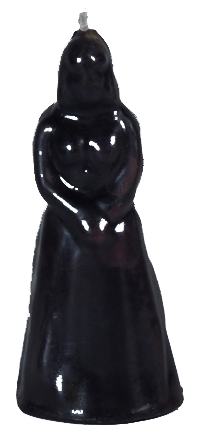
The candle flame flares, dips, gutters, and flares again, repeatedly
If no amount of effort on your part enables the candle to burn, and the helper light goes out three times as well, you should consider the need to start the entire job over from the beginning.
One way to minimize knots and double flames is by trimming the wicks BEFORE lighting the candles. Some candles have very long wicks — maybe you have not had the experience of seeing these, but i have seen vigil lights and figural candles with up to 2 of free wick. I am not talking here about factory offertory candles, but vigil lights and also figurals that are made by hand. Attempting to light a 2 long wick is just a waste of time — it cannot draw the wax up it. You have to trim it first.
If you are burning a bride-and-groom type candle for love, and the womans wax runs all over the mans, then the woman desires the man more than he desires her — and this holds true of all colours, including black for break-ups, white for new love, pink for friendship and romance, red for passionate love, and pale blue for peace and healing.
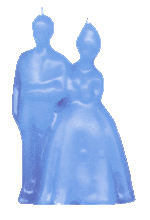
SIGNS LEFT IN OR ON THE CANDLE HOLDER, STAND, PLATE, SAUCER, GLASS, OR LABEL
The candle wick forms a knot or forms twin flames
You might try handling it one way this time and another way next time it happens (because, if you burn many candles, you will see these kinds of anomalies more than once), and from such experiences you may understand more deeply how you will wish to handle such events in the future.
When a free-standing candle burns with a knot or knob or lump at the tip of the wick or breaks apart to form twin flames or two diverging wicks, you can get a good reading on the situation by letting it burn as-is, or you can trim the wick, which is what candle manufacturers recommend.
When negative signs, such as smoke or soot, appear, one of the first questions i am asked by novice practitioners who post in theLucky Mojo Forumis, Was this due to a poorly made candle?
The candle burns unusually slowly or wont go out
If someone or something is clinging to the client, it is likely to be the same someone or something that is the cause of or is a part of whatever is the clients problem or situation that you are working to remedy.
Not every magical practitioner takes heed of the manner in which ritual or spell-castingcandlesburn, but for the most part, in my experience, people who work in African-American and African-Caribbean traditions often pay attention to the way acandleburns and can draw conclusions about it. In particular, spiritual workers whoset lights for clientsmake a habit of noticing the manner in which thecandlesburn. If smoke is involved in the divination process, the technique of assessing this is capnomancy; if the flames are watched for signs, you are practicing pyromancy. Inburning, we generally combine pyriomancy, capnomancy, and ceromancy into one art, which we callreading signs from candles.
The candle goes out before completely burning
If the candle was set in open opposition to the will of another person (e.g. a coercive love spell, an antagonistic spell, etc.) then this sign may either be a negative reply from the world of spirit to the question implied in the work or it may be a message from the other person, implying resistance, blockage, reversal of your designs, or sending harm back onto you or your client. Such a dousing of your lights may indicate that someone very strong is working against you or against the person on whose behalf you are setting the lights.
What would *i* do? I cant say, because at different times i have handled this differently, according to the factors i listed above. But if i had any negative feelings about accepting the premature burn-out as a sign, i would do a pendulum divination over the candle remains, with simple yes or no questions, to determine if i should set another light.
The glass or ceramic candle holder, saucer, or plate cracks or breaks
If it goes out a third time, you may try to splint the wick (that is, re-wick the candle) and pray over it very intently before relighting it, and you may also wish to consider adding a second helper or back-up light on the altar.
The candle gives a clean, even burn with no tokens or signs
The candle tips over and flames up into a fire hazard
The term someone or something means that it may be a living person, or a hostile spirit sent against the client, or a spirit of the dead, or the spirit of a drug or illness.

To be sure that any unusual behaviour of the candle flames is not caused by the mundane fact that you have set the candle in a draft, it is helpful to keep a few non-specific altar lights going in the room, so that you can truly judge the activities of the flames on your spell-lights against some simple blessing candles. If you have altar lights set, you can immediately tell if all the lights in the room are dancing or if only the lights on your spell candles are affected. If the flames are jumping on all the candles, it may be necessary to close the doors or windows or to move the spell candles somewhere else.
Some of the visual marks and signs we observe when candles burn come from outside of the candle itself, that is, we may be setting a candle for the love of a man named Bob and while it is burning, we keep hearing the name Bob being mentioned. This is a sign — but it is not a sign unique to candle magic. It helps us know what is going on, but it is not the same as candle reading.
If the bride side of a bride-and-groom candle — or a separate female candle — burns faster than the groom side of a bride-and-groom candle — or a separate male candle — then shes more affected by the spell work than he is, and vice versa.
In any case, if the light goes out, you will have to relight it. Do so with a prayer.
This gives you an opportunity to observe the flow of wax for signs. For instance:
If someone or something is clinging to the client, then give the client a cleansing
Some people try to influence the way melting wax runs. They do this as an intentional part of the spell-work, to increase the likelihood that things will go the way they want. Others prefer to let nature take its course and to watch running wax for signs, without interfering in its movements.
I understand the difficulty experienced by a scientistic person who is at the borders of the mystical, but cannot yet (or ever) become become fully immersed in the world of magic.
Sometimes a candle seems to take forever to burn, or there may be a little stubborn stick of wick at the end that keeps pulling in wax and just wont go out. I have seen some candles run 10 to 20 hours longer than manufacturer estimates, flickering at the end, but never quite extinguishing. This slow type of burn can necessitate dramatic watchfulness, but do not get impatient and blow such a light out prematurely. Watch and wait and observe what happens.
If you have set lights for several people and one persons candle burns faster than the others, then that person is most affected by the work, but the influence may not last long enough to produce a permanent change.
The candle flame flares, dips, bends, or gutters repeatedly
A glass encased candle burns half clean and half dirty
In the practice of magic, one of the basic principles is that things not seemingly connected on an overt or mundane level, when interpreted in a spiritual manner, give clues to underlying patterns of activity in the cosmos. The idea of an omen or sign derives from this basic principle — also known to some as the principle of synchronicity or the principle of intersubjectivity or the principle of wholistic experience. The real question is not, Was that candle ill-made? but, I chose THAT candle or THAT candle was selected for me — what does it SIGNIFY?
If a candle flame dances or bounces or forms a high spiral of flame, it is often seen as a sign that the person on whom you are working is greatly affected by the work; your message is getting through; watch out, though, because if the flame flares up tooo high,
This means things will go well with the spell or blessing and that one will most likely get what one wishes for. If a glass encased vigil or novena candle burns and leaves no marks on the
If the light goes out or is put out a second time, this a sign that you may need to use stronger means than you first employed to reach the goal. Try relighting it again, with a stronger and more focussed prayer.
The second form of ceromancy or wax reading is employed by those who are usingcandlesare part of a magical rite. In this case the wax is not poured off of thecandlesbut rather the manner in which thecandlesburn, and the remnants left after their burning, are observed for signs.
A free-standing candle runs and melts a lot while burning
The candle gives a clean, even burn with no tokens or signs
If the flame on a candle that was named for an individual leans or bends away from a named candle representing a lover or away from a central candle that represents some person he or she was supposed to protect, or if they gutter down, then the person so signified is emotionally repulsed by the lover or derelict in his protective duty toward the person signified by the other candle.
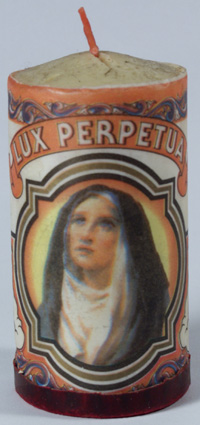
All that having been said, here are some of the things to watch for when burningcandles:
How do we know what a candle burning means? How do we know what it tells us about our magic spell? How do we engage in the spiritual practice of reading candles?
a candle that flames up into a fire hazard
If a free-standing candle smokes excessively at the outset, but ends up burning cleanly, it is a token of hidden trouble or someone working against your wishes. Things will not go well at first, but with repeated work you will overcome.
If, based on your knowledge of the case, you dont know which situation applies (i.e. whether the client is clinging to him/her/it or he/she/it is clinging to the client), you will do a simple divination on which situation is the operative one at this time.
Before you embark on watching the wax from thecandlesfor signs, i need to caution you that the signs made by flames, smoke, and wax are so varied and numerous that it would take pages and pages to list them all. Rather than my doing that, i would like to suggest that if you wish to docandle workyourself and not to hire a conjure doctor to do the work for you, then it is your job as a practitioner to learn to develop an insight into the theory behind candle wax divination, not by memorizing long lists of supposed rules, but by entering into a spirit of observatory play or spiritual insight with thecandles, insofar as they represent the people for whom they have been named.
To those who ask such a question in theForum, i respond with some certainly, You are asking the wrong question. The actual question you are asking is, Do omens exist at all or are they simply the result of happenstance and a poor understanding of the physics of candle manufacture and burning?
Those of us who have set many lights (in some cases, tens of thousands of them) do take notice of these things all the time, both at a conscious level and at an unconscious level. We reach a kind of knowledge-level at which we balance out those factors, based on a large data-bank, and still read thecandlesfrom a psychic or spiritual viewpoint.
A vigil candle burns down but leaves up to 1/2 of unburned wax at the bottom
Sure, maybe it was, but you chose it or it was chosen for you and, according to the principles of magic, in some way, in an ineffable and spiritual way, your prayer was linked to THAT particular candle, and it gave you THAT particular sign.
6632 Covey Road, Forestville, California 95436
If the candle is being burned because you wish to end or resolve a negative situation, the candles refusal to finish at a normal rate may mean that the target of your work, your opponent or enemy, is resisting being finished with the situation, despite your efforts.
For instance, you may have noticed that ambient air temperature affects candle burn patterns. Most people first become aware of this when they observe that setting a light in a chilly room slows down the burn-time and may leave more wax remnants on the candle-holder or plate or in the candle-glass than would be found had they burned thecandlein a warm room. I ask you to go a bit further: Try burning the same brand ofcandledressed the same way in a very overheated room, simulating a hot summer day — say at an ambient temperature of 100 degrees. You will get a different effect. Very possibly if you are burning a free-standing candle, it may bend and bow over and if you are burning a glass-encased vigil light, thecandlewax in the glass will liquefy to oil.
The candle goes out before completely burning
We can check how well our candle magic is going by consulting a trusted system of divination, such as using a pendulum or a Jack Ball,reading or cutting playing cards or tarot cards, or employingBibliomancy (divination by means of a book such as the Bible). But, again, this form of fortune telling arises outside of the candle magic spell that we are performing. It may give us information, but it is not the same as reading candles.
Generally a fast burn is good, but an overly-fast burn (compared to other times you have used the same kind of candle or to other candles that are being burned at the same time in the same ritual) means that although the work will go well, it may not last long. You might have to repeat the job at a later date.


Which course of action you choose will be determined by your own personality and your level of activity or passivity toward the world generally; the level of your activity or passivity with respect to your relationship to magic, omens, this ritual, and its desired outcome; and other factors such as whether more candles are readily available in the time frame of the ongoing ritual.
The candle flame hisses, sizzles, pops, or makes other noises
The term past conditions means events or memories from the clients past.
But it would be wrong to deduce from these observations a rigid formula that the environment actually dictates the burn. This is demonstrably NOT the case. The environment and other factors (noted above) certainly AFFECT the burn, but they do not DICTATE it. I can — and have — set 20 candles from the same factory on the same day for the same general proposition — for instance, love — and placed them side by side on the ground in wrought iron holders in a block 4 candles by 5 candles, and no two may burn alike. There will be no pattern of smoke marks, or label-burn, or glass-cracks that indicate where acandlewas positioned in the block. To be clear: the outer candles got more cold air flow, but they will show as much variability in outcome signs as the inner ones, which got less cold air flow. Badly placed wicks will crack the glass or burn the labels, a bug flying into the flame may leave its dead body in the glass, too many herbs will cause a smoke buildup, and so forth. The signs left were not dictated solely by the physics of the environment, but by dozens of other factors which worked themselves out in varied ways.
Once you know which it is, then you can address the issue through spiritual and magical remediation:
To that deeper and unspoken question i reply, This forum is for the discussion of MAGIC, not the discussion of PHYSICS. Here is what i mean by that:
If what is clinging to the client is very strong — for instance, if it is the spirit of a drug or a bad companion who hangs around — you may also have to do some
SIGNS OBSERVED WHILE THE CANDLE BURNS
![]()
CANDLE MAGIC IN THE HOODOO ROOTWORK TRADITION
When a vigil light burns with twin flames, the smoke will almost always smoke or at least white-streak the glass.
The divination of signs by looking at burning flames is a form of Pyromancy or divination by fire. You can also perform pyromancy with a campfire or by watching the flames in your fireplace.
You might do a pendulum divination over the candle remains and ask the question. Or acard reading. Or Bibliomancy.
When weburn candles or set lightsin theconjure tradition, we often watch and wait for divinatory signs that tell us how the work is going to come out — that is, whether the spell will be a success or not — and what does my candle burn mean? is the most common question folks have about this process.
If you are burning a green money candle and the wax melts and runs down onto the monetary offering, then the spell is eager to work and the candle is blessing the money.
If you are burning two or more candles, named for specific people, and the flame of one tends to lean or bend toward the other, the person so represented is attracted to the person signified by the other candle. The one whose flame is taller is the dominant one.
SIGNS LEFT IN THE WAX RESIDUE FROM A BURNED-OUT CANDLE
The divination of signs observed in melted wax is called Ceromancy. In addition to observing the waxleft behind when a candle burns naturally, it is a common Ceromantic practice to tip a candle over a shallow bowl of water and let some wax pour into the water, then observe and identify the shapes taken by the solidifying wax. These images can be read in the same manner as tea-leaf readings, using the same symbol system.
To perform a pyromantic divination with candles, it is best to work by candle light only, in an otherwise dark or dim room. If the behaviour does not stop, then it is to be considered a sign, and not simply a physical coincidence.
